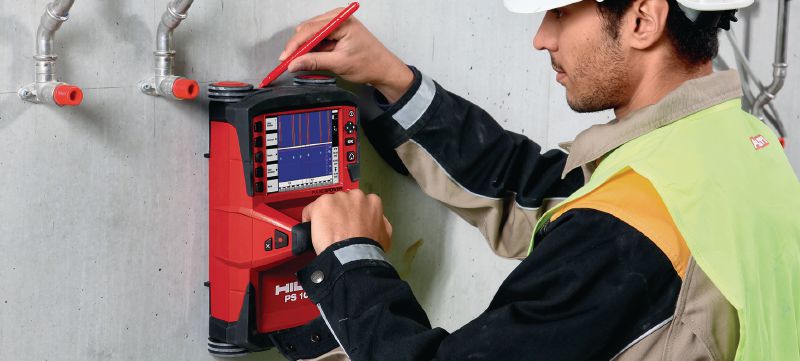RainierGPR Service Areas: Where We Offer Premier Concrete Scanning
Enhancing Job Planning and Execution Through Advanced Concrete Scanning Techniques
In the realm of project preparation and execution, foresight and accuracy are essential components that can make the distinction between success and setbacks. Advanced concrete scanning techniques have actually become an advanced tool established to raise the standards of project monitoring within the building industry. By harnessing sophisticated innovation, these techniques supply a look into the architectural stability of a building also before the first block is laid. The implications of such advancements are extensive, promising a standard shift in just how jobs are approached and supplied.
Benefits of Advanced Concrete Scanning Methods

Improved Precision in Task Analyses
Enhancing task analyses with advanced concrete scanning strategies dramatically increases the precision and reliability of construction examinations. By employing sophisticated scanning innovations such as ground-penetrating radar (GPR) and 3D imaging, job teams can now obtain in-depth insights right into the condition of concrete frameworks, determining potential flaws or weak points that might not be visible to the nude eye. This improved level of accuracy in task analyses makes it possible for building professionals to make even more enlightened choices concerning repair and upkeep techniques, bring about enhanced total task results.
Moreover, the raised accuracy in task evaluations achieved via sophisticated concrete scanning strategies assists in minimizing the threat of unforeseen problems throughout the building phase. By proactively identifying covert abnormalities within concrete frameworks, such as rebar corrosion or spaces, project groups can address these problems at an early stage, avoiding expensive hold-ups and remodel later in the task lifecycle. Eventually, the boosted precision in job analyses helped with by innovative concrete scanning techniques adds to better efficiency, cost-effectiveness, and top quality in construction jobs.
Very Early Identification of Structural Obstacles
Early detection of architectural obstacles plays a vital duty in guaranteeing the stability and safety and security of concrete structures throughout the building and construction procedure. Recognizing potential issues at a beginning permits for timely intervention, avoiding expensive rework, timetable hold-ups, and safety risks. Advanced concrete scanning methods, such as ground-penetrating radar (GPR) and 3D review imaging, allow project teams to reveal covert issues, voids, support layout disparities, and other anomalies that could jeopardize the framework's security.
By applying these strategies throughout the preparation and implementation stages, building and construction professionals can proactively address structural challenges before they escalate right into significant troubles. As an example, spotting insufficient concrete cover over reinforcement bars at an early stage can avoid corrosion and structural weakening over time - RainierGPR Service Areas. Moreover, recognizing variants in concrete thickness or density can assist optimize material use and make certain consistent stamina homes across the structure

Ultimately, very early recognition of structural challenges via innovative concrete scanning not only enhances the total top quality and toughness of the building however also adds to a much safer developed environment for owners and individuals.
Enhanced Safety Actions in Building
The application of robust security protocols is vital in the construction market to mitigate threats and protect the health of stakeholders and employees. Building sites are inherently unsafe atmospheres, with potential risks ranging from drops and devices malfunctions to structural failings. To improve safety procedures, building firms are increasingly taking on technical advancements such as wearable devices that check workers' crucial indicators and discover possible health problems in real-time. In addition, using drones for site monitoring permits regular security assessments without placing personnel in damage's means. Safety and security training programs have likewise progressed to consist of digital reality simulations that offer hands-on experience in taking care of emergency situation scenarios. Additionally, the integration of man-made knowledge in safety and security management systems enables proactive recognition of possible threats, enabling for timely interventions. By focusing on security with the consolidation of innovative innovations and detailed training programs, building tasks can dramatically reduce accidents and create a protected working environment for all involved - RainierGPR Service Areas.
Streamlining Project Administration Processes
To maximize operational effectiveness and ensure job success in the building and construction industry, an emphasis on streamlining job management procedures is crucial. By implementing reliable task administration processes, building tasks can reduce delays, reduce costs, and enhance general efficiency.

Verdict
To conclude, the usage of advanced concrete scanning methods provides various benefits for job planning and execution. These methods offer enhanced accuracy in job evaluations, early identification of structural challenges, enhanced precaution in building, and streamlined project management processes. Incorporating these methods into job operations can ultimately lead to much more effective and reliable end results in building and construction tasks.
Ultimately, the boosted precision in job assessments helped with by advanced concrete scanning strategies adds to greater performance, cost-effectiveness, and top dig this quality in building projects. RainierGPR Service Areas.
To maximize functional efficiency and make certain job success in the construction sector, a focus on streamlining task management procedures is crucial. By carrying out effective project administration processes, building and construction projects can decrease delays, reduce prices, and improve general performance. By improving task administration procedures through innovation combination, clear interaction, and data-driven techniques, building and construction projects can attain greater effectiveness, cost-effectiveness, and effective outcomes.
These strategies provide enhanced go to my site precision in job analyses, early identification of architectural challenges, improved safety and security measures in construction, and structured job monitoring processes.